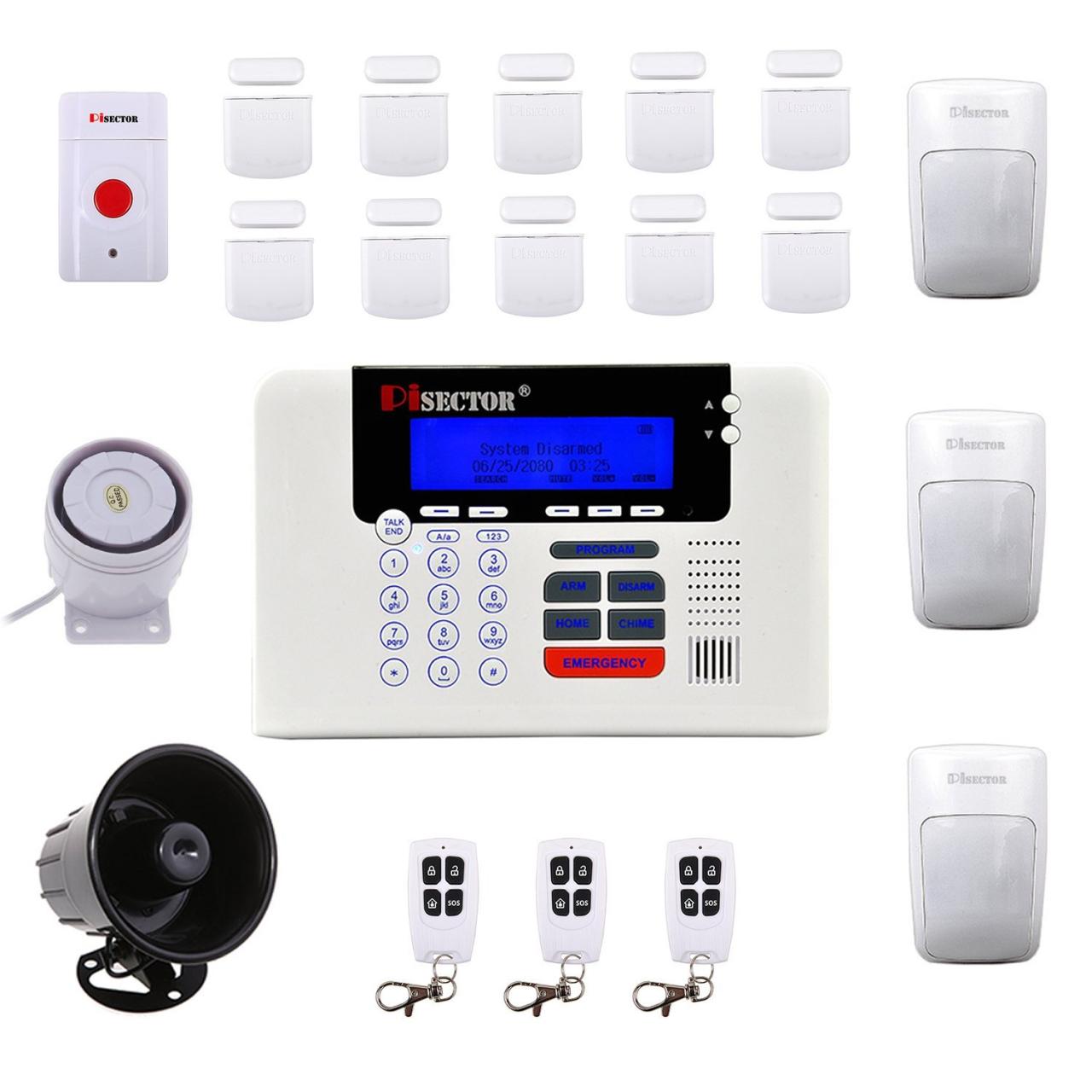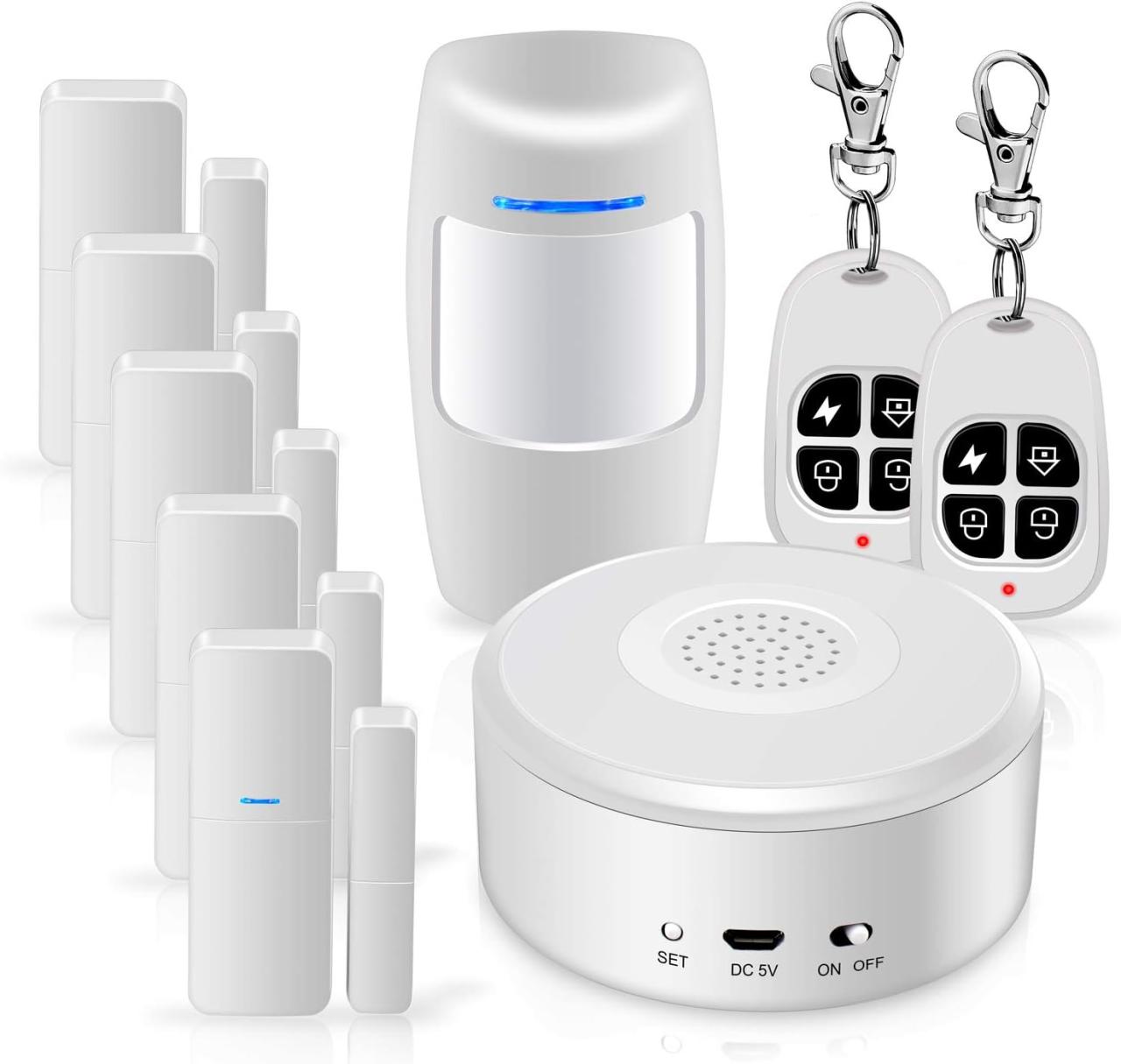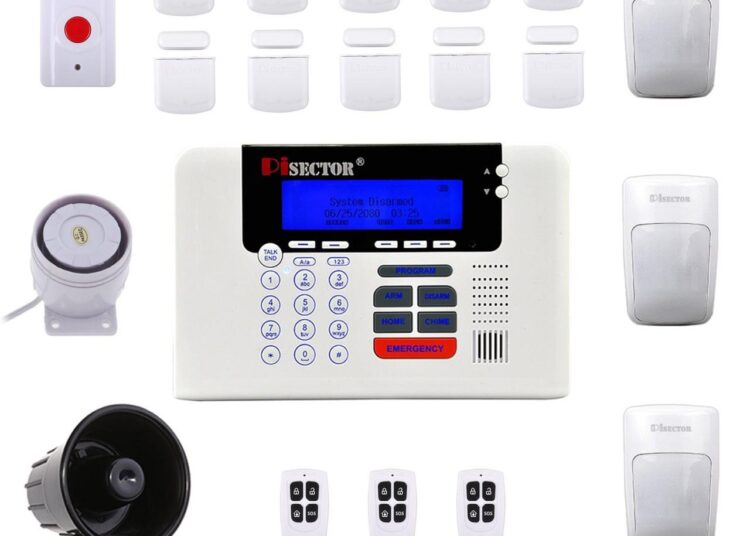As technology advances, so do our home security measures. In this digital age, Wireless home security systems have become the cornerstone of protecting our homes and loved ones. Let's dive into a world where innovation meets safety, exploring the ins and outs of these modern security solutions.
Introduction to Wireless Home Security Systems
Wireless home security systems have revolutionized the way we protect our homes by offering advanced technology and convenience. These systems use wireless communication to connect the various components of the security system, providing a seamless and efficient way to monitor and protect your property.
Benefits of Using Wireless Systems
- Flexibility: Wireless systems can be easily installed and expanded without the need for extensive wiring, making them ideal for renters or homeowners who want a customizable solution.
- Remote Access: With wireless systems, you can monitor your home security remotely through a smartphone or computer, allowing you to check in on your property from anywhere.
- Reliability: Wireless systems are less vulnerable to power outages or physical tampering, ensuring that your home remains protected at all times.
Key Components of a Wireless Home Security System
- Control Panel: The central hub that communicates with all the sensors and devices in the system.
- Door and Window Sensors: Detects when doors or windows are opened, triggering an alarm if unauthorized entry is detected.
- Motion Sensors: Detects movement within the home and can trigger an alarm if unexpected activity is detected.
- Cameras: Provides visual surveillance of your property, allowing you to monitor and record any suspicious activity.
- Mobile App: Allows you to control and monitor your security system remotely, receive alerts, and view live camera feeds.
Types of Wireless Home Security Systems

Wireless home security systems come in various types, each offering different features and levels of protection. Let's compare and contrast some of the common types available in the market.
DIY Systems vs. Professional Monitoring Systems
DIY systems allow homeowners to install and monitor their security systems independently, often through smartphone apps. On the other hand, professional monitoring systems involve a third-party monitoring service that responds to alerts and contacts authorities when needed. Here are some popular brands offering wireless home security systems:
- DIY Systems:
- Ring Alarm: Known for its easy installation and affordable pricing.
- Abode: Offers a wide range of sensors and integration with smart home devices.
- Professional Monitoring Systems:
- ADT: A well-known name in home security, offering 24/7 monitoring services.
- Vivint: Known for its advanced technology and home automation features.
Features and Capabilities of Modern Wireless Home Security Systems
Modern wireless home security systems are packed with advanced features to enhance home protection. Some key features include:
- Wireless Cameras: Allow for remote viewing and recording of live footage.
- Smart Sensors: Detect motion, window or door openings, and environmental changes.
- Mobile App Control: Enables users to monitor and control their security system from anywhere.
- Integration with Smart Home Devices: Connects with devices like smart locks, lights, and thermostats for added convenience and automation.
- Cloud Storage: Safely stores video recordings and alerts for future reference.
Installation and Setup
When it comes to installing a wireless home security system, there are a few key steps to follow to ensure it is set up effectively for maximum coverage and protection.
Installation Process
- Choose the right location for the control panel: Place it in a central area of your home for easy access.
- Mount the sensors: Install door and window sensors at entry points and motion sensors in key areas.
- Set up the cameras: Position cameras strategically to cover important areas both inside and outside your home.
- Connect to the monitoring service: Make sure your system is properly connected to the monitoring service for 24/7 protection.
Tips for Effective Setup
- Test the system regularly: Ensure all sensors, cameras, and alarms are functioning correctly.
- Secure your network: Use strong passwords and encryption to prevent hacking.
- Consider professional installation: If you're unsure about setting up the system yourself, consider hiring a professional for installation.
Common Challenges and Solutions
- Interference: Wireless signals can be disrupted by other devices. Keep your system away from sources of interference like microwaves or cordless phones.
- Weak signal: If you're experiencing weak signal strength, consider adding a signal booster to improve coverage.
- Placement issues: Improper placement of sensors or cameras can lead to blind spots. Adjust the positioning until you have optimal coverage.
Monitoring and Alerts
:max_bytes(150000):strip_icc()/71x6h3XbW6L._AC_SL1500_-0154e5c0cbc84d1e8e92c128a0a91af3.jpg)
Monitoring and alerts are crucial components of wireless home security systems, providing real-time information and notifications to homeowners to ensure the safety of their property and loved ones.
Types of Alerts
- Notifications: Wireless home security systems can send notifications to your smartphone or email in case of any suspicious activity or breach detected.
- Alarms: These systems are equipped with loud alarms that sound off when a security threat is detected, alerting both the homeowners and potentially scaring off intruders.
- Customizable Alerts: Users have the flexibility to customize alerts based on their specific needs, such as setting different alerts for different sensors or cameras.
Customizing Monitoring and Alerts
Customizing monitoring and alerts allows homeowners to tailor their security system to meet their individual needs and preferences. Here are some insights on how to customize monitoring and alerts:
- Adjust Sensitivity: Fine-tune the sensitivity of motion sensors or cameras to reduce false alarms while ensuring accurate detection of security threats.
- Set Monitoring Schedule: Customize the monitoring schedule based on your daily routine, such as activating monitoring only during nighttime or when you're away from home.
- Integrate Smart Devices: Integrate your wireless home security system with other smart devices, such as smart lights or smart locks, to create a comprehensive security network with interconnected alerts.
Integration with Smart Home Devices
Wireless home security systems can now be seamlessly integrated with a variety of smart home devices, such as smart locks and cameras, to enhance overall security measures.
Benefits of Smart Home Ecosystem for Enhanced Security
Integrating wireless home security systems with smart home devices offers numerous benefits:
- Remote Access: Smart devices allow homeowners to monitor their property from anywhere, providing real-time updates and alerts.
- Automation: Smart devices can be programmed to work together, such as triggering lights and alarms when motion is detected.
- Increased Visibility: Cameras can provide a comprehensive view of the property, enhancing surveillance and monitoring capabilities.
- Customization: Users can tailor settings to suit their specific security needs, creating a personalized and effective security system.
Examples of Comprehensive Security Setup
When different smart home devices work together, they can create a robust security setup:
- Smart Locks and Cameras: Smart locks can be integrated with cameras to allow for remote access control and visual verification of individuals entering the property.
- Motion Sensors and Lights: Motion sensors can trigger smart lights to illuminate the area, deterring potential intruders and alerting homeowners of any suspicious activity.
- Smart Alarms and Monitoring Systems: Smart alarms can be synced with monitoring systems to provide immediate alerts to homeowners and monitoring services in case of a security breach.
Maintenance and Troubleshooting
Regular maintenance is crucial to ensure that your wireless home security system functions optimally and provides the protection you need. By following a maintenance schedule, you can keep your system in top condition and address any issues promptly.
Maintenance Schedule
Creating a maintenance schedule for your wireless home security system can help you stay organized and ensure that all components are functioning correctly. Here are some tasks to include in your schedule:
- Regularly test the system by arming and disarming it to check for any malfunctions.
- Inspect the batteries in sensors, cameras, and other devices to ensure they are functioning properly.
- Clean cameras and sensors regularly to prevent dust or debris from affecting their performance.
- Check for any physical damage to components and replace or repair them as needed.
Troubleshooting Techniques
Knowing how to troubleshoot common issues with your wireless home security system can help you address problems quickly and effectively. Here are some common troubleshooting techniques:
- Check the power source of the system to ensure all devices are receiving power.
- Verify that the system is connected to the internet and that there are no connectivity issues.
- Reset devices or the entire system to resolve software glitches or connectivity issues.
- Contact customer support or refer to the user manual for specific troubleshooting steps for your system.
Importance of Updates and Patches
Regularly updating your wireless home security system's software is essential for maintaining its security and functionality. Software updates and patches often include bug fixes, security enhancements, and new features that can improve the performance of your system. Neglecting to update your system can leave it vulnerable to security breaches and malfunctions.
Make sure to enable automatic updates or check for updates regularly to keep your system up to date.
Final Wrap-Up

In conclusion, Wireless home security systems offer a seamless blend of convenience and protection, revolutionizing the way we safeguard our homes. With continuous advancements and integrations with smart home devices, the future of home security looks brighter than ever. Stay informed, stay secure.







